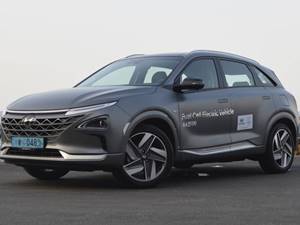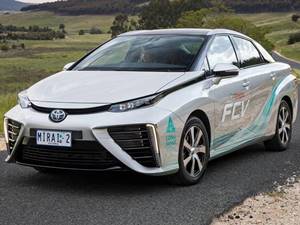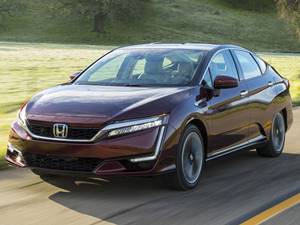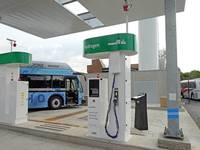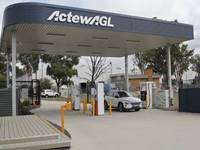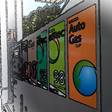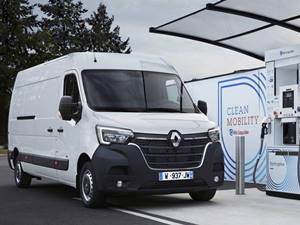What is green Hydrogen and how is it produced
Roman Frey News

Hydrogen is the most abundant element in the universe. But it's hard to find in the free state. It has to be extracted from other sources like water, coal, biomass or natural gas.
The variety of options for producing and obtaining it, together with its high efficiency in fuel cells and its capacity for storage over long periods, make it a highly appreciated resource in all sectors of society.

There are different types of hydrogen, depending on the sources and their production methods.
- The Grey hydrogen is generated through so-called natural gas steam reforming. CO2 is produced in this process, so it is not an emission-free process.
- Blue hydrogen is obtained in a similar way to grey hydrogen, but in this case CO2 is captured instead of being emitted into the atmosphere, so it is considered a low-carbon process.
- Renewable hydrogen or Green hydrogen is produced by the electrolysis of water from renewable electric energy sources such as solar or wind power. This process does not emit CO2 and transforms water into hydrogen and oxygen molecules. Therefore, it is positioned as an effective solution to promote the decarbonization of all sectors (mobility, industry and tertiary sector).

Green hydrogen has countless advantages, such as:
- It is obtained through elements as abundant as water and renewable electrical energy
- It's 100% clean energy. In all its production process, CO2 emissions are zero
- It offers energy stability, as it allows energy storage, compensating for the intermittent generation of renewable electrical energy and reducing energy spills
- Can be transported by existing gas infrastructure mixed up to a certain proportion with natural gas
- It can be used for the generation of synthetic gas, which is to all intents and purposes equated with natural gas
- It has multiple applications. Besides being able to be used for domestic/commercial consumption and in mobility, it is used as a raw material for the decarbonization of industrial and chemical sectors, especially in those where electrification is not feasible today, or which already consume it in the form of gray hydrogen

The capacity of hydrogen to manage renewable electrical energy, something that is not possible to do on a large scale today, would guarantee the security and reliability of the energy supply in a future in which renewables will acquire greater weight in the electricity generation mix. This increase will lead to large surpluses of electricity, and one of the most efficient ways of storing this energy will be through the production of green hydrogen. This process is called power to gas technology (a concept that refers to the transformation of electricity into gas, hydrogen in this case).

By 2030, hydrogen is expected to be capable of moving 10-15 million passenger cars and half a million trucks. Hydrogen fuel cell electric vehicles are an alternative to battery-operated electrics. They offer greater autonomy, faster recharging times and therefore allow recurrent use of the vehicle, something for which current batteries are more limited. In addition to road transport by light, last mile and heavy vehicles, hydrogen can also be used as a fuel for rail and maritime transport, both of which are sectors where electrification is not technically feasible at present.

Hydrogen is the most abundant element in the universe. But it's hard to find in the free state. It has to be extracted from other sources like water, coal, biomass or natural gas.
The variety of options for producing and obtaining it, together with its high efficiency in fuel cells and its capacity for storage over long periods, make it a highly appreciated resource in all sectors of society.

There are different types of hydrogen, depending on the sources and their production methods.
- The Grey hydrogen is generated through so-called natural gas steam reforming. CO2 is produced in this process, so it is not an emission-free process.
- Blue hydrogen is obtained in a similar way to grey hydrogen, but in this case CO2 is captured instead of being emitted into the atmosphere, so it is considered a low-carbon process.
- Renewable hydrogen or Green hydrogen is produced by the electrolysis of water from renewable electric energy sources such as solar or wind power. This process does not emit CO2 and transforms water into hydrogen and oxygen molecules. Therefore, it is positioned as an effective solution to promote the decarbonization of all sectors (mobility, industry and tertiary sector).

Green hydrogen has countless advantages, such as:
- It is obtained through elements as abundant as water and renewable electrical energy
- It's 100% clean energy. In all its production process, CO2 emissions are zero
- It offers energy stability, as it allows energy storage, compensating for the intermittent generation of renewable electrical energy and reducing energy spills
- Can be transported by existing gas infrastructure mixed up to a certain proportion with natural gas
- It can be used for the generation of synthetic gas, which is to all intents and purposes equated with natural gas
- It has multiple applications. Besides being able to be used for domestic/commercial consumption and in mobility, it is used as a raw material for the decarbonization of industrial and chemical sectors, especially in those where electrification is not feasible today, or which already consume it in the form of gray hydrogen

The capacity of hydrogen to manage renewable electrical energy, something that is not possible to do on a large scale today, would guarantee the security and reliability of the energy supply in a future in which renewables will acquire greater weight in the electricity generation mix. This increase will lead to large surpluses of electricity, and one of the most efficient ways of storing this energy will be through the production of green hydrogen. This process is called power to gas technology (a concept that refers to the transformation of electricity into gas, hydrogen in this case).

By 2030, hydrogen is expected to be capable of moving 10-15 million passenger cars and half a million trucks. Hydrogen fuel cell electric vehicles are an alternative to battery-operated electrics. They offer greater autonomy, faster recharging times and therefore allow recurrent use of the vehicle, something for which current batteries are more limited. In addition to road transport by light, last mile and heavy vehicles, hydrogen can also be used as a fuel for rail and maritime transport, both of which are sectors where electrification is not technically feasible at present.

